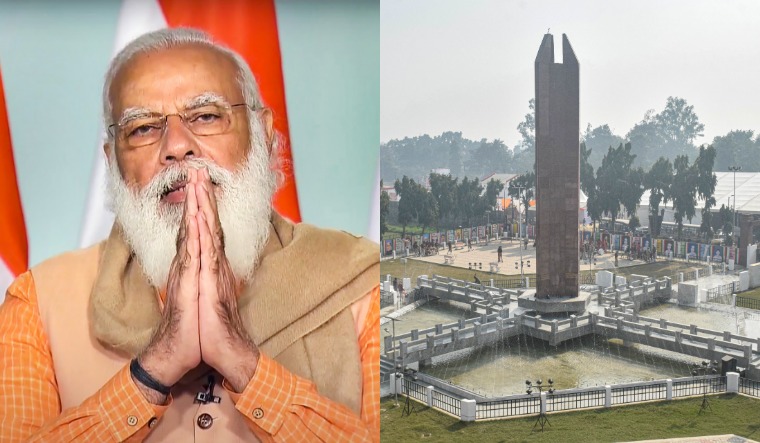Prime Minister Narendra Modi on Thursday kicked off, with the Uttar Pradesh government, the year-long celebrations to mark the Chauri Chaura event.
The event, named after the village in Gorakhpur district where it took place, was a vital turning point in the country’s struggle for independence as it marked the end of the Non-Cooperation movement launched by Mahatma Gandhi in September 1920. On February 4, 1922, protesters clashed with the police at Chauri Chaura, some 26km from Gorakhpur. The police opened fire, killing three people, and the protesters responded by setting fire to the police station, killing 23 policemen. A stunned Gandhi, who was against violence, called off the Non-Cooperation Movement. The government brought legal cases against 228 Indians—of whom, 19 were sentenced to death and 14 were awarded life imprisonment.
Marking the start of centenary celebrations of the Chauri Chaura incident, Modi in a virtual event said, “It is unfortunate that the martyrs of Chauri Chaura have not been spoken about much. The incident was not just about a police station being burnt down; the message it sent was huge. It should not be seen as a physical fire; it was a fire in the hearts of the people.”
UP Chief Minister Yogi Adityanath had earlier in the day called upon people to participate in the centenary celebrations fully. Adityanath quoted former prime minister Atal Bihari Vajpayee by saying “India is not a mass of a land; it is a living statesman. Shiv exists in every particle, the Ganga in every bit. We shall live and die for it.”
The state government’s plans for the centenary celebrations include special programmes on all memorials of martyrs and freedom fighters; weekly playing of the national anthem and lighting of lamps at such spots; the singing of Vande Mataram; poetry sessions and plays on the theme of nationalism; exhibitions of books and photographs related to the freedom movement; light and sound shows at other significant but neglected sites of the freedoms struggle—such as Bithoor (Kanpur), Meerut, Varanasi, Prayagraj, Jhansi and Kakori (Lucknow); the setting of murals depicting important events in the freedom struggle and research on the lesser-known martyrs of the struggle for independence.
also read
- ASI surveys newly found temple, pilgrimage sites and wells in Sambhal
- Yogi govt cuts power to Sambhal MP Zia Ur Rehman Barq’s residence, imposes Rs 1.91 crore penalty for ‘power theft’
- Uttar Pradesh police book Samajwadi Party MP Zia ur Rehman Barq for ‘electricity theft’ after accusing him of Sambhal violence
- UP: Congress workers clash with police during Vidhan Sabha march; one person dies from injuries
The inauguration was marked by the launch of a special stamp. The logo for the event was also launched and Adityanath explained that its symbolic significance was Indians were to protect our motherland with the last drop of our blood. “It matters not if we live; our motherland should be protected,” said Adityanath.
He also said that the celebration must mark a larger movement towards Swadeshi, self-dependence and cleanliness.
The year-long celebrations will cover events that took place from 1857, dubbed India’s first war of independence, to 1947, the year the country was freed.





